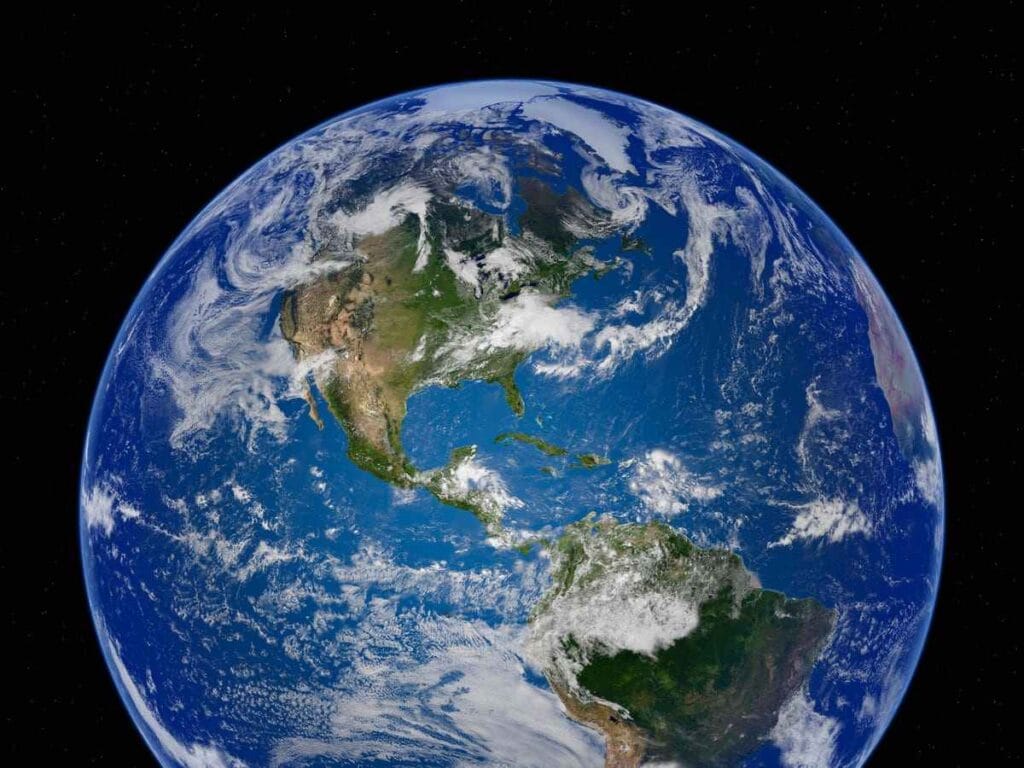In a fascinating moment that unites humanity in wonder, Earth experienced its shortest day ever recorded on July 9, 2025, completing its rotation 1.51 milliseconds faster than the usual 24-hour cycle. This remarkable event has sparked curiosity among scientists worldwide, inviting us to explore the mysteries beneath our planet’s surface with a shared sense of awe. As researchers investigate what this means for technology, climate, and even the clocks on our smartphones, this discovery inspires us to come together, marvel at our planet’s dynamic nature, and nurture a deeper connection to the world we all call home.

It may sound like no big deal—after all, what’s 1.51 milliseconds? But in the realm of atomic clocks, GPS, satellite systems, and financial markets, even the tiniest change in time can ripple through systems we all rely on daily. Let’s break it down and explore why this matters more than you might think.
Earth Just Had Its Shortest Day Ever
| Category | Details |
|---|---|
| Record-Setting Date | July 9, 2025 |
| Time Shaved Off | 1.51 milliseconds shorter than the usual 86,400 seconds |
| Previous Record | July 5, 2022 – 1.46 milliseconds shorter |
| Why It Matters | Impacts GPS, internet time servers, satellite orbit calculations, and atomic clocks |
| Cause | Believed to be a combo of inner core dynamics, Moon’s orbit, and climate-related mass shifts |
| Next Steps | Scientists may consider implementing a negative leap second by 2029 |
| Sources | IERS.org |
Earth’s record-breaking swift rotation in July 2025, while not altering your morning routine, invites us to embrace the awe-inspiring mysteries our planet continues to reveal. This subtle yet profound shift, observed with care by scientists, reminds us of our shared connection to a dynamic world, where even a millisecond can spark curiosity. As we depend more on technology that thrives on precise timing, this moment encourages us to unite in wonder, thoughtfully adapting to the evolving rhythm of our planet, one second at a time, to foster a future that honors both innovation and our collective home.
What Does It Mean to Have a Shorter Day?
We all know the day is supposed to be 24 hours long, right? Well, in exact terms, that’s 86,400 seconds. But Earth doesn’t spin at a perfectly even rate. It’s kind of like a spinning top that wobbles over time. And sometimes, it spins just a tad faster or slower.
On July 9, 2025, Earth rotated in 86,399.99849 seconds, breaking its previous record. That 1.51 millisecond difference might be hard to notice, but for systems that rely on extreme precision, like financial trading algorithms, power grids, and GPS navigation, it’s a big deal.
Even a tiny error in timekeeping could throw off space missions, disrupt high-frequency trading, or confuse automated systems. And in a world increasingly reliant on real-time communication and AI-driven decision-making, staying in sync with Earth’s natural rhythm is becoming more important than ever.

What Makes Earth Spin Faster or Slower?
1. Earth’s Liquid Core Movements
The Earth’s liquid outer core flows and shifts. These movements can redistribute mass and affect rotational speed—just like an ice skater spins faster when they pull in their arms. These core shifts may be caused by heat from the planet’s interior or even magnetic field fluctuations, which themselves are under constant scientific observation.
2. Lunar Tidal Forces
The Moon’s gravity doesn’t just pull tides. It can also influence Earth’s spin. Depending on its orbital alignment, the Moon can either help slow down or slightly speed up the Earth’s rotation. Long-term studies have shown that the Moon is very slowly drifting away, which should be causing the Earth’s rotation to slow down, but the recent speedup suggests other forces are temporarily overriding that effect.
3. Post-Glacial Rebound and Climate Change
Melting glaciers cause Earth’s surface to adjust, a process known as post-glacial rebound. When ice melts and the land rises, the planet’s mass distribution shifts, affecting its rotation. Climate change is accelerating this process. Rising sea levels and melting polar ice are not just environmental issues—they also have mechanical effects on the planet’s rotation.
4. Atmospheric Winds and Ocean Currents
Jet streams, hurricanes, El Niño patterns—all of these moving masses of air and water contribute to changes in rotational speed. Even big storms can have a measurable impact. In fact, the speed and direction of high-altitude winds can shift angular momentum across the globe, ever so slightly tweaking the Earth’s rotation.
5. Earthquakes and Seismic Activity
Massive earthquakes can also cause sudden shifts in Earth’s mass and rotation. For example, the 2004 Indian Ocean earthquake shortened the length of the day by about 6.8 microseconds. These effects are small, but cumulative changes over time can lead to more noticeable differences.
Why Scientists Are Paying Close Attention
This isn’t just a fun fact for trivia night. Here’s why the shortest day ever actually matters:
- GPS accuracy: Global Positioning Systems rely on time accuracy down to the nanosecond. Any time drift can cause errors in navigation, especially in aviation and maritime industries.
- Communication systems: Everything from your smartphone to air traffic control depends on exact timing. Internet packet delivery and synchronized data logging require precision.
- Power grid coordination: Power grids in the U.S., Europe, and Asia require synchronized frequency control to operate safely. Even minor time differences can affect load balancing and efficiency.
- Financial systems: Banks and stock exchanges timestamp transactions to the millisecond. A mismatch can cause legal and financial headaches.
- Scientific Research: Telescopes, particle accelerators, and space observatories rely on coordinated atomic time to run complex simulations and data collection.
Leap Seconds: A Crash Course
You’ve heard of leap years, but what about leap seconds? These are added occasionally to align atomic time (TAI) with Earth time (UT1). The last leap second was added in 2016.
But here’s the twist: If Earth keeps spinning faster, scientists may need to subtract a second for the first time in history. That’s called a negative leap second. It’s tricky stuff for computers, many of which are programmed to handle added seconds but not subtracted ones.
Some major tech companies have even lobbied for eliminating leap seconds altogether due to the operational complexity they introduce. Still, until global consensus is reached, timekeepers continue to monitor Earth’s rotation closely.
Who Tracks All This?
This is the job of the International Earth Rotation and Reference Systems Service (IERS), along with support from NASA, atomic time labs, and observatories worldwide. They use:
- Very Long Baseline Interferometry (VLBI) to measure Earth’s orientation in space.
- Laser satellite ranging to detect orbital shifts.
- GPS monitoring stations to monitor precise time drift.
- Super accurate atomic clocks, like those maintained by the National Institute of Standards and Technology (NIST) in the U.S.
Related Links
AI Neural Network Decodes Iconic Black Holes – Check What Scientists Just Uncovered
Earth’s Day Is Shrinking: Why the Shortest 24 Hours in History Could Be Just Weeks Away!
Farewell to the Moon? NASA Confirms It’s Drifting Away — And It’s Getting Worse
What Happens If Earth Keeps Speeding Up?
Here are the possibilities:
- First Negative Leap Second Ever: Could come as early as 2029.
- Redefining Time Units: Scientists may revise how we define the “second” to keep things in sync.
- Software Upgrades: Tech giants like Google, Amazon, and Microsoft may need to update systems.
- More Frequent Time Adjustments: IERS may need to make more regular corrections.
- New Models for Timekeeping: Institutions may begin using predictive models that incorporate Earth’s variable spin in real-time systems.
Practical Advice for the Everyday Traveler or Techie
- If you’re building systems that rely on ultra-precise timekeeping, stay updated on leap second announcements.
- For regular folks: Don’t worry, your calendar and watch aren’t changing anytime soon.
- If you’re curious, track Earth rotation data at IERS or TimeAndDate.
- Travelers and engineers alike should be aware of potential shifts in GPS accuracy if changes become more frequent.
- Software developers and IT managers may want to monitor announcements from NIST or IERS as Earth’s changing rotation becomes more impactful to digital infrastructures.
FAQs
Q1: Why did Earth spin faster than usual?
Mostly due to internal Earth dynamics, the Moon’s influence, and shifts in mass like melting glaciers.
Q2: Can I feel the difference?
Nope. A millisecond is too tiny for humans to notice.
Q3: Will we lose more time in the future?
Possibly. Scientists are still studying whether this is a one-time anomaly or part of a long-term trend.
Q4: Could this affect my phone or GPS?
Not immediately. Systems are constantly updated, but developers will need to stay alert.
Q5: What is a negative leap second?
Instead of adding a second, timekeepers would skip a second to stay in sync with Earth’s faster rotation.
Q6: Has this happened before?
Not exactly. Earth has had shorter days, but this is the shortest ever recorded with modern atomic precision.
Q7: Are other planets affected similarly?
Yes! Other rotating bodies like Mars and Jupiter also experience shifts, though Earth’s changes have greater impact due to our reliance on technology.








